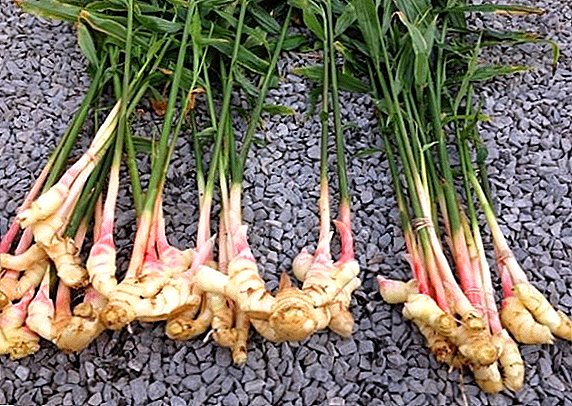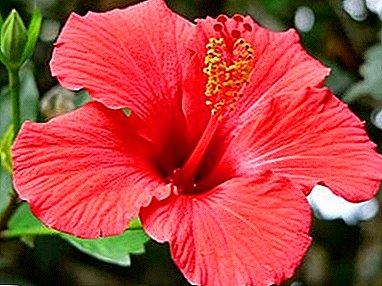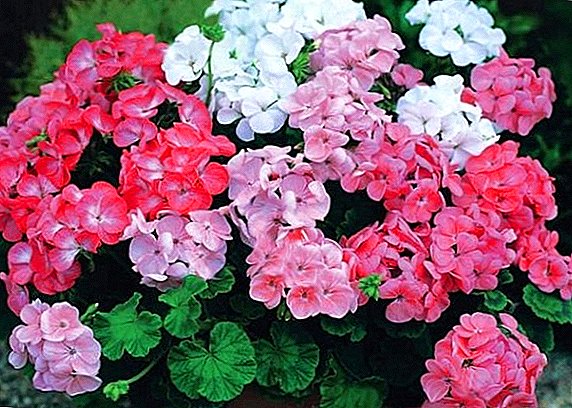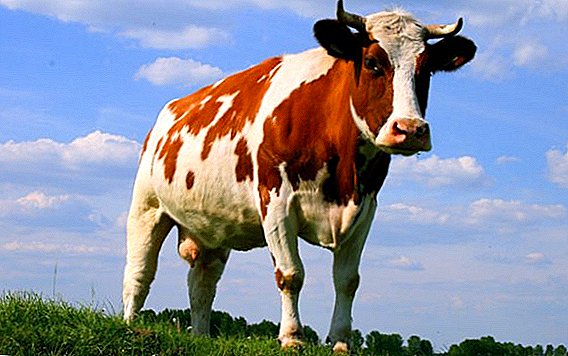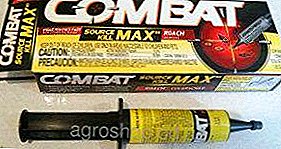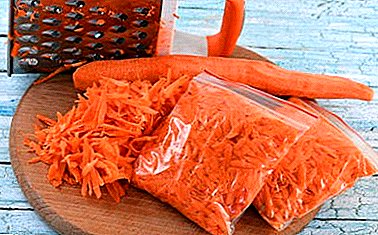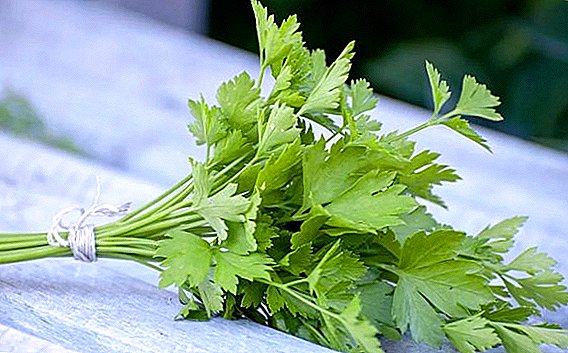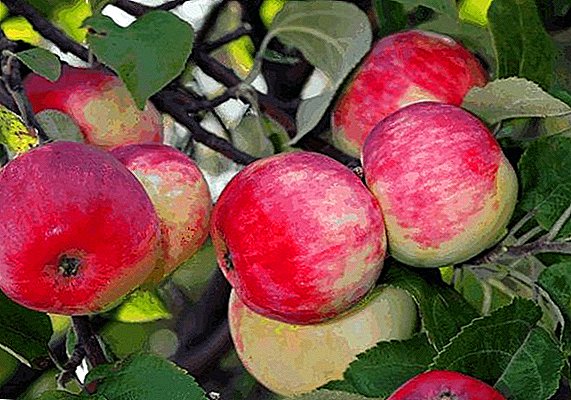 Apple tree "Solntsedar" in its characteristics can argue with many representatives of its type of European selection. We can say that it was derived specifically in order to successfully grow in the climatic conditions of our country. Its fruits are distinguished by extraordinary taste, once you try them, you will not confuse the apples of this variety with any other. This article contains all the necessary information about the apple "Solntsedar": a description of the appearance of the variety, photos, its advantages, disadvantages and requirements for the place of planting.
Apple tree "Solntsedar" in its characteristics can argue with many representatives of its type of European selection. We can say that it was derived specifically in order to successfully grow in the climatic conditions of our country. Its fruits are distinguished by extraordinary taste, once you try them, you will not confuse the apples of this variety with any other. This article contains all the necessary information about the apple "Solntsedar": a description of the appearance of the variety, photos, its advantages, disadvantages and requirements for the place of planting.
Breeding history
This apple variety was bred by Russian breeder P. A. Dibrov by sowing the seeds of "Anis alyy vorobyevsky" by the method of free pollination. The goal of Dibrov was to get a summer apple tree that could successfully grow in central Russia, had a high resistance to frost and would give a good harvest.
Did you know? Wild apple trees are capable of reaching a height of 15 meters, and the fact that most garden representatives of this tree do not grow above three meters is entirely the merit of breeders.
 The first trees of this variety were obtained in the middle of the 20th century and were distinguished by impressive frost resistance, but the quality of their fruits left much to be desired. By copulating varieties with the most successful fruits, P. A. Dibrov received trees, the apples from which resemble in their qualities obtained from modern trees of this variety, only by 1970.
The first trees of this variety were obtained in the middle of the 20th century and were distinguished by impressive frost resistance, but the quality of their fruits left much to be desired. By copulating varieties with the most successful fruits, P. A. Dibrov received trees, the apples from which resemble in their qualities obtained from modern trees of this variety, only by 1970.Tree description
The height of an adult tree of this variety rarely exceeds 3-4 meters.The crown has rounded outlines, rather dense and dense, with time it wilts towards the ground. The main branches, moving away from the trunk, form an acute angle, the bark on them and the trunk has a brown tint. The bulk of the fruit is tied on the branches of two or three years of age.
Young branches - dark brown, fairly thin, covered with a small amount of a gun, internodes are rather short, the shape of the twigs on the cut is round.
Leaves have medium size, elongated-ovoid or elongated-rounded shape, slightly cast in blue in the sun, tapering to the ends, serrate-serrated at the edges. The leafy plate is rather dense, has a small amount of hairs in the lower surface, is thick. 
On some sheets you can find the blades and segments. In relation to the branch, each sheet forms an angle of at least 90 °. Stems of medium severity, rather thick, side by side with stipules of very small sizes. The shape of the stipules is subulate.
Learn also about other varieties of summer apples: "Melba", "Papirovka", "Moscow Pear", "Mantet", "Candy", "Medunits", "Dream", "Silver Hoof", "Orlik", "Robin", "Glory to the winners."
Fruit Description
Apples from trees of this variety are not large, rather medium or even slightly smaller than average size. The average weight of one fruit varies from 80 to 120 grams. The shape of the fruit can be truncated broadly, or properly flat-round, on individual apples may be the presence of irrelevant ribbing.
Peel fruit smooth to the touch, dry, the surface is slightly cast in the sun, can be covered with a bluish wax bloom. Quite large in size, subcutaneous points have a light shade. The color of the fruit is mainly light cream, almost milky, however, the surface color is present, giving the apple a pinkish-red hue. Small fruit stalks, thin.

Did you know? According to archeologists, the apple tree is the first tree that our ancestors began to grow as a cultivated plant. The first discovered traces of cultivated apple trees date back to 6500 BC. e.Pulp - white, with occasionally meeting reddish streaks, has a fine-grained structure, juicy and tender. The apples taste sour-sweet, with a slight tart aftertaste. The funnel is of medium width and depth, with slight rusting on the edges. Seed chambers are built on a closed type, the cavity inside the main axis is weakly expressed.
Lighting Requirements
This apple variety is quite sun-loving.therefore, it will be better if the landing site is exposed to sunlight for as long as possible during the day. However, if you live in a dry and very hot region, it is recommended to increase the frequency of watering the tree so that it does not dry out as a result of excessive solar activity.

Soil requirements
Apple tree "Solntsedar", especially in the first years after its landing, extremely demanding on soilin which it grows. It would be best to plant it in chernozem, and if there is no such possibility, then at least in sandy loam. Extremely badly this tree takes root in clay soils and in soils, which contain a large number of different solid rocks.
Apple trees also do not tolerate excessive marshiness of the soil and accumulation of excessive amounts of groundwater, as this can lead to the development of fungal roots and further plant death. Therefore, it is not recommended to plant them in low-lying areas, as well as in places where groundwater occurs closer than 2 meters to the surface.
The best pollinators
In order to stimulate better fruiting, this variety of apple trees requires planting various apple pollinators. The main criterion for the correctness of planting pollinator is its location at a relatively short distance from the tree itself and the coincidence of the timing of flowering and fruiting. In this role, the following varieties will perform in the best way:
- "White filling";
- "Suislep";
- "Saffron Pepin";
- "Antonovka";
- "Wine".

Important! In order to optimize the process of carrying pollen from the tree pollinator to the apple tree "Solntsedar" you can install a beehive near them or locate the first relative to the second from the windward side.
Fruiting
The period of the beginning of fruiting for these trees comes rather late, 7 years after planting. Fruits reach a removable condition in the first half of August.. However, it is noted that this variety has a tendency to quickly fall off after ripening, so you need to carefully monitor the condition of apples, so as not to miss the moment when it is time to start harvesting. Old trees of this variety are characterized by irregular fruiting.
Period of flowering and ripening
The flowering period is in the second half of May. Blossoms apple "Solntsedar" flowers of fairly large size, white and pink hue, shaped like saucer. The pistils of flowers are located approximately at the same level with the anthers or slightly lower. The flowers are collected in inflorescences paniculata or comb-shaped.
If the pollination of a variety has been successful, then from the end of May until the second half of August the ripening period continues. During this period, the tree requires a lot of different mineral substances and organic fertilizers, so the bulk of all dressings should fall on this time.

Important! As a top dressing it is best to use mullein, diluted in a ratio of 1:10, or bird droppings. Before fertilizing, it is also necessary to water the tree properly.
Yield
This variety of apple has a very impressive yield. From one tree aged from 7 years and a height of 3 meters, you can collect up to 100-120 kilograms of apples. In the process of harvesting, it is not recommended to pick up apples that have fallen to the ground, since the duration of their storage under normal temperature conditions is very short.
Transportability and storage
Fruits of the "Solntsedar" variety at room temperature are stored for only 10-12 days, so immediately after assembly they are recommended to be placed in a refrigerator. Thus, their shelf life can be increased to 1.5-2 months. To ensure the best preservation, it is also recommended to sort out all the apples struck and having defects, since rot from them may spread to other fruits.
These apples have a rather firm and elastic structure, so they can be transported in boxes, even tightly pressed against each other, without particular fear. Apples "Solntsedar" very well retain their shape, do not crack and do not give the juice in case of minor damage, so they can be considered one of the best varieties for long-distance transport.

Disease and pest resistance
Despite the many positive qualities, this apple tree, unfortunately, can not boast of significant resistance to the main diseases affecting these trees - scab, fruit rot, milky gloss and powdery mildew. These diseases can be prevented if in the spring, before the bud breaks, the tree is sprayed with copper sulfate solution.
Of the pests, the most dangerous for Apple "Solntsedar" are aphid, caterpillar and spider mite. The best methods of dealing with these pests are timely whitening of the tree trunk, as well as treatment with a solution of any insecticide, for example, Bordeaux liquid.
Winter hardiness
Apple "Solntsedar" boasts a truly titanic indicators of winter hardiness. She has no need to shelter for the winter, even if it is just a planted tree. Thanks to the work of domestic breeders she able to withstand temperatures down to -40 ° C. The only winter threat to it is rain, as a result of which a tree can damage its young branches, and you will be left without a crop.
Fruit use
Fruits are recommended to be used as soon as possible after harvest. They can be used both fresh and used for various preserves. Fruits make excellent pies, compotes and other dishes from apples. Bone fruit can be used as a seed for seedlings.
Skilled housewives make preparations for the winter from apples, dry them and even freeze.

Advantages and disadvantages
Among the main advantages should be highlighted:
- High taste qualities of fruits and their attractive appearance.
- Good winter hardiness.
- Summer fruiting.
- High yields.
- Compactness and small size of the tree.
The disadvantages of this apple tree are:
- Low resistance to the development of fungal diseases.
- The inconsistent nature of fruiting in adulthood.
- Short period of storage of fruits.
- The need for pollinating trees to stimulate yields.
So, we hope that this article has helped you find answers to all the questions you have about the apple tree of the "Solntsedar" variety. Show care and patience in the care of this plant, and this will certainly lead in the future to stunning in terms of quantitative indicators and unusually tasty yields!


